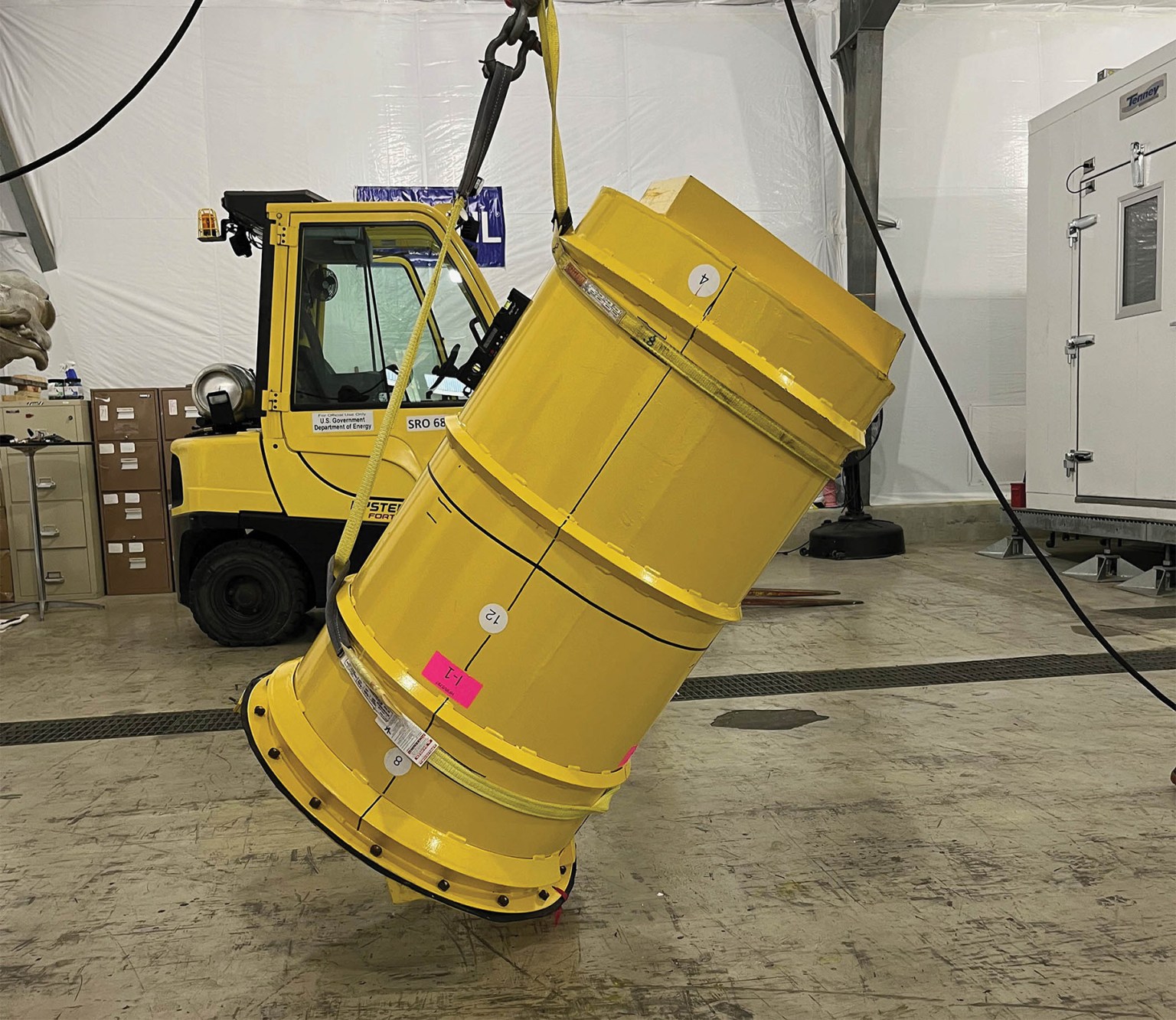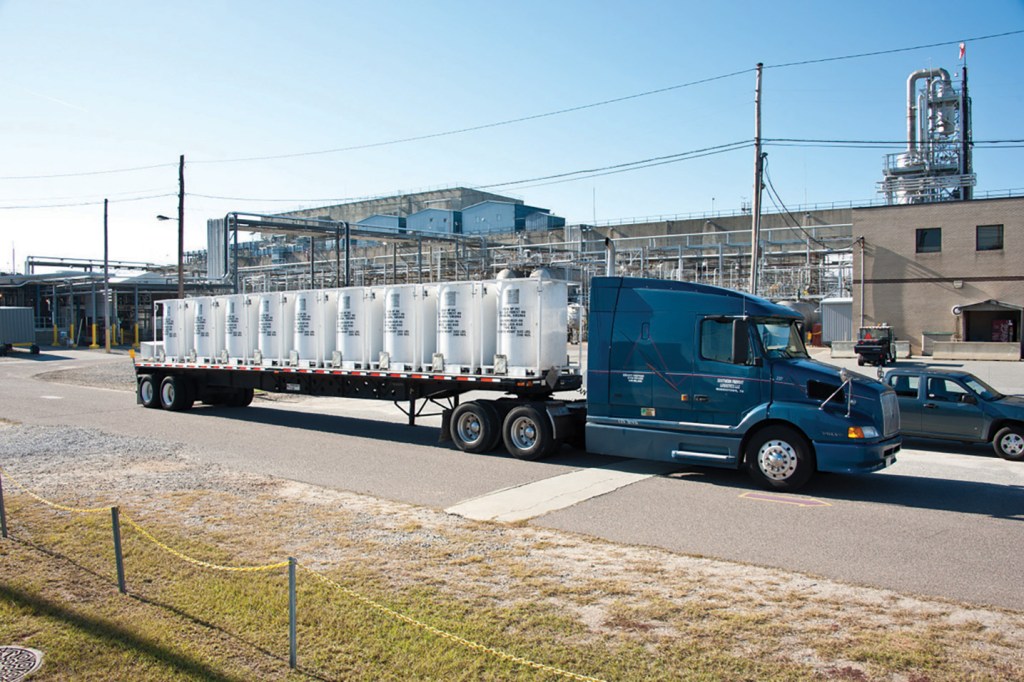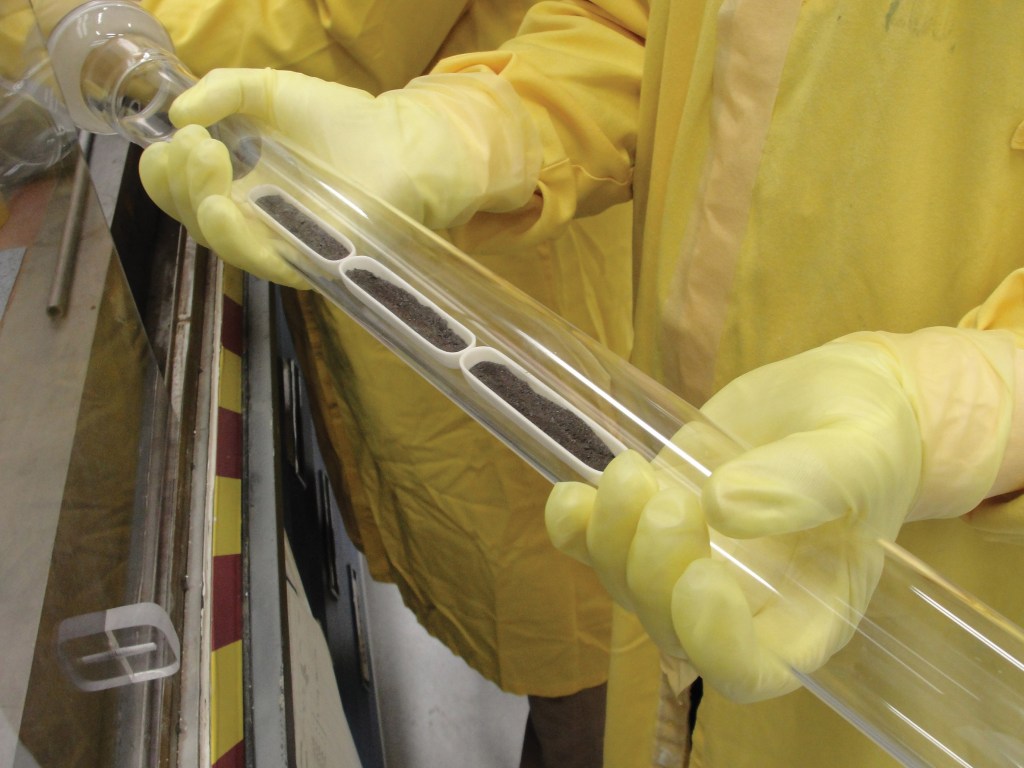SRNL Supports New Advanced Reactor Fuel Cycles
“SRNL is focused not only on advancing technologies related to SMR fuel fabrication, but also on how to remediate the spent nuclear fuel that comes from existing commercial reactors.” – Bryan Foley

Cross-section of a TRISO fuel particle. (Illustration: Alphonzo James, SRNL)
Our nation’s energy needs continue to increase and advances in nuclear power technologies are central to ensuring energy resiliency. Savannah River National Laboratory is leveraging decades of expertise in four key areas that address the emerging needs associated with advanced small modular reactor (SMR) fuel cycles.
SRNL’s applied science solutions for Tri-Structural Iso-tropic (TRISO) fuel processing, High-Assay Low-Enriched Uranium (HALEU) feedstock, spent nuclear fuel (SNF) re-processing, and packaging and transportation, are poised to accelerate broad adoption of advanced small modular reactors by addressing the fuel cycle needs. SMRs are key to the future of reliable and secure energy, with many planned to come online during the next decade. While these reactors offer many benefits, a viable solution is needed to handle the resulting spent nuclear fuel.
The Department of Energy has identified three new reactor designs that will require TRISO fuel before coming online by 2030. TRISO fuel particles are encased in a graphite moderator and TRISO fuel is more structurally sound and resilient than traditional reactor fuel. However, a TRISO-based reactor typically discharges the largest volume of SNF in the industry – compared to more traditional light water reactors – per unit of energy produced. This situation creates both short and long-term storage challenges. SRNL began addressing this issue in 2013 when the laboratory partnered with the German national research institution at Jülich, to advance an alternative technology.
“A major drawback of the TRISO-based High Temperature Gas-Cooled Reactors (HTGRs) is that they typically discharge the largest volume of used fuel per megawatt (MW)/hour of energy produced, approximately 10-16 times more SNF volume compared to light water reactors,” said SRNL scientist Bob Pierce. “Apart from the impact of the SNF volume on geological disposal, the SNF presents a sizable interim storage liability that diminishes the appeal of the HTGR technology. The SRNL vapor digestion process can overcome that barrier, and it is the technology best positioned to solve this issue in time for the generation of these spent fuels in the early- to mid-2030 time frame”, said Pierce.
TRISO Fuel Particles
SRNL’s patented process reduces TRISO SNF volume by a factor of 20 by removing the graphite binder in which the small particles of fuel are dispersed. The goal is to have a complete, mature process demonstration at an engineering scale.
Project collaborators and funding partners include the DOE Office of Technology Transfer, the University of South Carolina, the Advanced Research Projects Agency-Energy and Westinghouse.

Material transport test drum. (Photo: Kurt Eberl, SRNL)
High-Assay Low-Enriched Uranium (HALEU) Feedstock
An additional challenge in the deployment of advanced SMRs is the need for HALEU fuel. Many of the new reactors will require HALEU fuel, which contains a higher relative percentage of Uranium-235 than what is used in existing commercial reactors. Unfortunately, the current US industry projected demand for HALEU far exceeds the available supply.
Through our work with a reactor fuel vendor, we know the available high enriched uranium fuel at the Savannah River Site meets the purity needs of select reactor fuels, according to SRNL scientist Tom Shehee. “Dependent on a blend scenario, SRNL and the Savannah River Site can provide the fuel stock needed to completely fuel one of the first advanced reactors to come online in the US,” noted Shehee.
SRNL is performing two key roles to provide the needed supply of HALEU fuel:
- Analysis of Solutions
SRNL analyzed batches of High Enriched Uranium solutions in storage at the Savannah River Site and determined production of low-enriched uranium can be readily transitioned to produce HALEU solutions to meet the extensive fuel specifications of the reactors. - Licensing of a Transportation Shipping Package
SRNL is collaborating with a partner certified in container compliance to perform analysis and develop a Safety Analysis Report for Packaging. This effort will use a typical LEU transportation package to transport HALEU to a fuel fabrication facility that will produce new fuel for the SMRs.

Uranium oxide that has been hydrochlorinated and tested at a high temperature that resulted in a green color, indicating a successful reaction of the uranium with the hydrogen chloride. (Photo: Bryan Foley, SRNL)
Related Video: SRNL’s Environmental and Legacy Management Directorate Supports New Advanced Reactor Fuel Cycles
Fuel Reprocessing
While SNF can be reprocessed, numerous separation steps are required to convert this material into a usable product. Scientists at SRNL are testing a new technology for processing SNF for use in molten salt reactors, which are gaining attention for their increased efficiency and reduced waste volumes when compared to conventional reactors.
“SRNL is focused not only on advancing technologies related to SMR fuel fabrication, but also on how to remediate the spent nuclear fuel that comes from existing commercial reactors,” said SRNL scientist Bryan Foley.
In theory, SNF from any existing reactor could be converted into fuel for molten salt reactors by using a molten, salt-based, chlorination technique patented by collaborator Metatomic, Inc. SRNL is working with Metatomic, Inc. to perform proof-of-concept experiments to assess the viability of this technique.

Current LR-230 Transportation Shipping Package. (Photo: Tom Shehee, SRNL)
Packaging and Transportation
The safe storage and transportation of nuclear materials is critical to sustain safety in the nuclear power industry. SRNL’s packaging and transportation group is leveraging more than 200 years of combined experience and technical expertise in the radioactive material packaging field to address the safe transportation of advanced SMR fuels and spent fuels.
SRNL is developing two packages to meet the specific needs of both TRISO and HALEU fuel transportation. Package 9979 type AF is capable of safely transporting TRISO fuel and process materials. SRNL was recently contracted to develop a similar package for a company developing micro-modular reactors that would utilize TRISO particles within the reactor. Work is currently underway to re-develop a package commonly referred to as the Liqui-Rad Transport Unit, to make it capable of transporting HALEU liquid material.
As the energy landscape continues to develop and the need to support a variety of reactors increases, SRNL is providing solutions. Advances in technology for the “back end” fuel cycle efforts are necessary to advance emerging nuclear power technologies to meet the nation’s growing energy needs. The scientists and engineers at SRNL are dedicated to producing practical and effective solutions to ensure our nation’s energy resilience.
SRNL program manager Kurt Eberl notes, “We are one of three regulatory review teams for radioactive material packaging shipments under the DOE Packaging Certification Program. Not only is it unique that we’re involved in it, but the unique part is that we do everything. We have a pretty diverse crew, mostly mechanical, but also chemists and other engineers that work together to do analysis, design, testing, and write and review SARPs.”

Loaded crucibles in a process tube prior to insertion into the tube furnace. (Photo: Bryan Foley, SRNL)